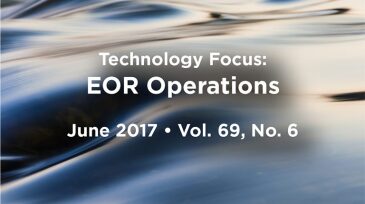polymer flooding
-
This paper presents key challenges in surface-facilities-project implementation during the construction and operational-readiness phase of a project and presents results from full-field implementation.
-
The implementation of chemical EOR has proven successful but the method faces significant technical and financial challenges.
-
We report a novel type of viscosity modifier relying on the supramolecular assemblies that have pH-adjustable viscosities and robust tolerance against high temperatures and salinities, and are resistant to shear-induced degradation.
-
The polymer-injection project in the Dalia field, one of the main fields of Block 17 in deepwater Angola, represents a world first for both surface and subsurface aspects.
-
Chemical enhanced-oil-recovery methods such as polymer and alkaline/surfactant/polymer (ASP) flooding are generally not considered suitable for oil viscosities greater than 100 or 200 cp.
-
A normal five-spot polymer-flooding pilot has been conducted at the Mangala field, one of the largest onshore fields in India, and results are encouraging
-
Polymer flooding in sensitive areas can require the transport of polymer fluids over long distances. Conventional wisdom limits transport distance or degradation occurs. This paper argues that critical velocity, not distance, is the controlling factor.
-
Initially, polymer flooding had not been considered as a viable enhanced-oil-recover (EOR) technology for Pelican Lake in northern Alberta, Canada, because of the high viscosity of the oil until it was considered in combination with horizontal wells.
-
Polymer flooding has been used to enhance the production of oil from mature fields in Oman. This article discusses the trial of several approaches to improve the treatment of water produced from these fields.
-
A successful pilot test of polymer flooding was conducted in the San Jorge Gulf basin.










